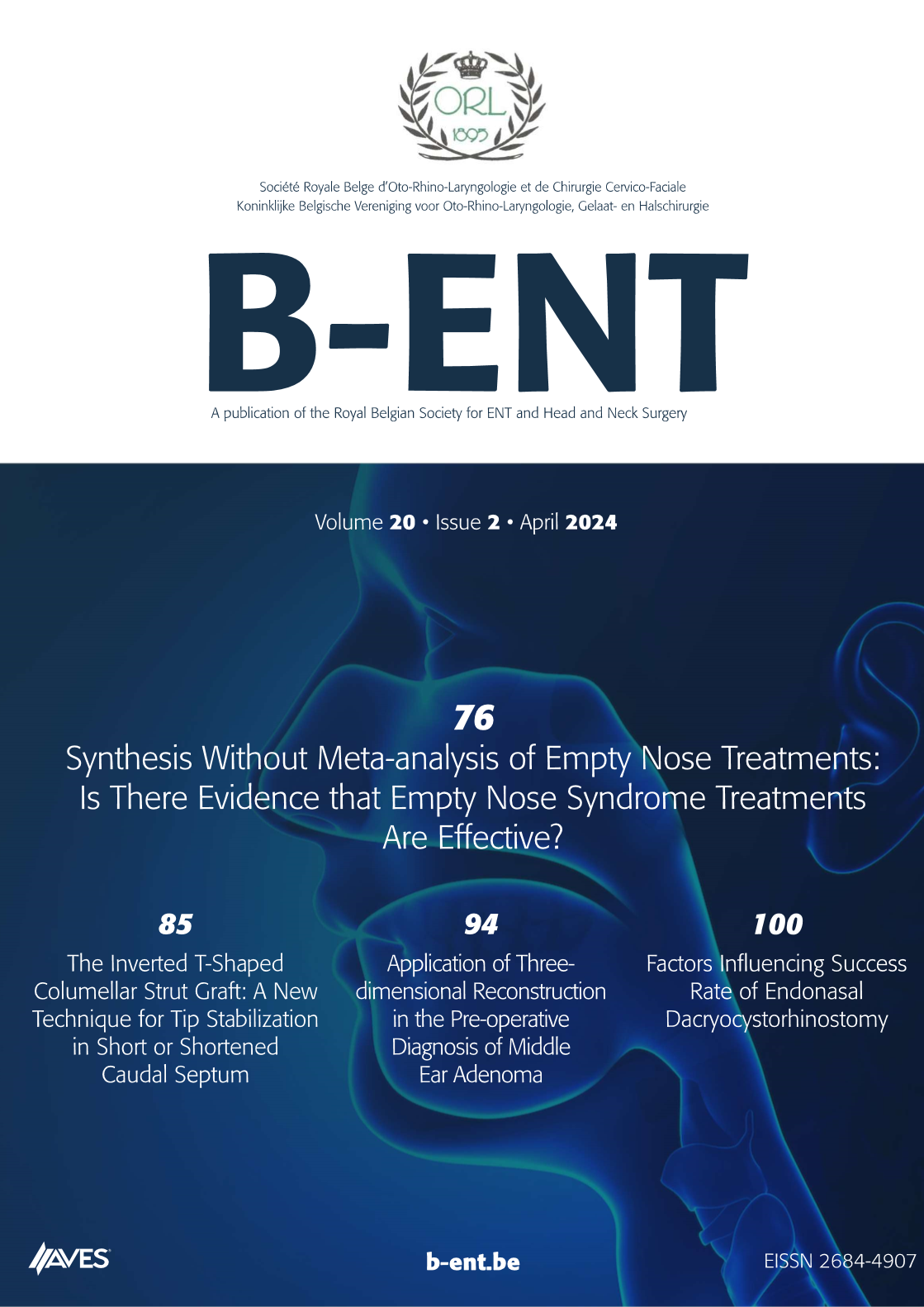Impact of graft type on anatomical and functional outcome in type-I tympanoplasty. Objective: There is a general opinion that cartilage grafting in type-1 tympanoplasty has better anatomical outcomes when compared with fascia and perichondrium. But, regarding functional outcomes, however, although the literature is mainly in agreement about acceptable hearing gains, there is an on-going dispute on this matter. The aim of this study was to evaluate anatomical and functional outcomes in type-I tympanoplasty according to grafting materials.
Methods: In this study, 154 cases who had undergone type-I tympanoplasty over a period of nine years were enrolled and divided into three groups according to graft type: i.e., fascia, perichondrium and cartilage. Pure tone audiometry was reviewed pre- and post-operatively (one year after surgery) for functional outcomes. The average air-bone gap (ABG) and air-conduction gain (ACG) were also determined pre- and post-operatively for each case. Tympanic membrane perforation was documented in terms of involved percentage and site.
Results: A significant difference in air conduction gain between cartilage and other grafts (perichondrium (p<0.001), fascia (p<0.001)) was found, while no difference was found between fascia and perichondrium (p=0.720). There was no significant difference between groups in terms of anatomical outcomes (p=0.615).
Conclusions: The majority of relevant studies are retrospectively designed, leading to a graft selection bias, while the impact of the site and size of perforation, which may have a confounding effect, is not taken into account. In this study, graft selection bias was eliminated by determining the distribution of the perforation site and size on a group basis. A comparable anatomical, but decreased functional, outcome for cartilage grafting when compared with TMF and perichondrium was revealed.



.png)
